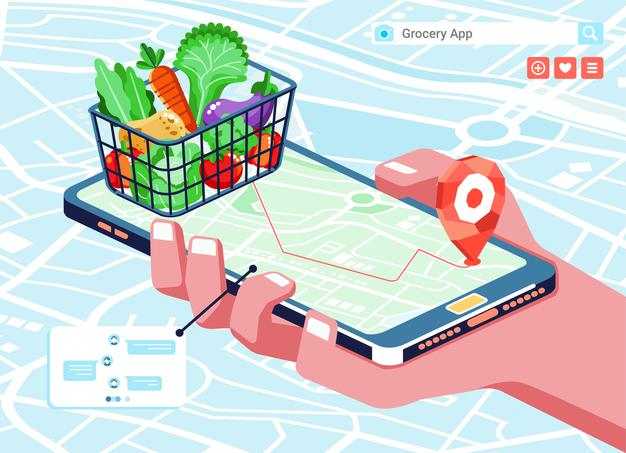Launch Your Online Grocery Delivery Business with Instacart Clone

The current COVID-19 crisis that has been plaguing the world means that life will never be what it used to be! This has given rise to the birth of a new term called ‘new normal!’. There are different manifestations of this new lifestyle. One of them is that people will not step out of their homes or their locality unless and until it is completely mandatory and there is no way out. This lifestyle change is more likely to be followed for activities that increase the risk of exposure… Like visiting restaurants and supermarkets.
Table of Contents
Launch Your Online Grocery Delivery Business with Instacart Clone
Thankfully, technology has stepped in at the right time, making on-demand apps available to carry out almost any activity by just using a mobile app. To name a couple of them, there are apps that help deliver food from restaurants, and there are Apps that deliver groceries to your doorstep. Some apps have seen a massive surge in their usage because of the coronavirus crisis. Video calling applications, gaming applications, and grocery delivery applications fall into this category.
Enter Instacart
In spite of being touted as an underdog to Amazon and Walmart, one such app that made it to the top of the charts because of the COVID-19 crisis is Instacart.
The daily downloads for the Instacart app increased by 218% between mid-February and mid-March, and it was markedly better than its competitors Walmart and Amazon. The company transacted about $700 million in the first half of April, and this unprecedented growth has led to Instacart announcing the hiring of about 300,000 additional delivery personnel. In fact, it is only in the first quarter of 2020 that the profit margins of the company went positive for the first time ever since Instacart was created.
The strategy behind the success
To an end-user, it seems that they are from an app, and a random delivery executive ensures that the grocery bag reaches their doorstep. However, the functionalities that go behind the execution are different for each app. What Instacart did was redefine the ecosystem of grocery shopping, learning from the failures of its competitors.
Unlike a few big companies that own an inventory, Instacart tied up with local grocers, or rather, made the local grocers tie up with them! They followed a unique strategy that helps them achieve this unprecedented rate of success.
The entities involved
Shopping on Instacart is a breeze for any user! There are three different entities involved in the functioning of any app like Instacart. There are separate apps available for each entity involved in the ecosystem.
The first, of course, is the retail partners. There are multiple registered stores in a locality that are not completely tied to Instacart, but also have the liberty to operate as an independent enterprise. They just signed a contract with Instacart to get listed on the app or the website. The store can showcase the products that are available for purchase on the Instacart app.
The third entity involved the users. They, using their app, place orders to be delivered to their doorsteps. The users can choose the store from which they would like to buy on the app. They can also add a list of their preferred stores. The app also gives an option for customers to choose their delivery slots. The payments can be made online using multiple payment methods.
The order of the entities is a bit mixed up because the second one deserves some extra attention! The second entity goes by a special name ‘Instacart shoppers’. As the name implies, these shoppers specialize in shopping from the retail store for the customer. It is to be noted that since Instacart does not have an inventory for itself, there has to be someone who shops like a normal customer in these retail grocery stores.
This segment is further subdivided into two categories: The in-store Instacart shoppers and the full-service Instacart shoppers. The in-store Instacart shoppers are part-time workers who take care just to fill the shopping bags of customers. They do not have to take care of the delivery. The full-service in my shoppers, on the other hand, are independent contractors who take care of the entire process – right from shopping in retail supermarkets to delivering the full shopping bag to the customer.
The process of ordering on Instacart
The user will have to download the Instacart app. The app is available for both major mobile operating systems. Can also be accessed from their website. Once you enter into the platform, you will have to either import the address of your location manually, or alternatively, you can consider letting the app access your device location. The app/website will list all the stores available in your locality.
The user can choose a wide range of items and add them to the shopping cart. They can make a payment using the integrated payment gateway, and also choose a date and time slot for their delivery scheduling.
Once the customer has placed their order, a shopper will receive a notification informing them of the details of the order including the order list and the delivery location. The shopper will start collecting the ordered items from the grocery store and make a payment using the exclusive debit card issued by Instacart.
Once the payment is made, the shopper/delivery contractor can take care to deliver the full shopping bag to the customer’s doorstep.
The avenues for revenue
The biggest measure of success for an app like Instacart is the revenue it generates. Instacart has multiple channels for making a profit.
- Instacart, except for the first order, charges a delivery fee of $5.99 if the delivery needs to be executed within two hours after placing it. If customers opt for a one-hour hour delivery, the delivery cost is $7.99. The cost may also vary according to minimum purchase requirements.
- Instacart partners with local vendors, and in essence, it provides greater visibility and an additional channel of profit for these businesses. Since Instacart facilitates these businesses, it takes a commission per order. Instacart also charges a partnership fee for every business that signs up with its services.
- There are instances when Instacart marks up the prices of the items by 20% from the net cost of the item. There might be a few retailers who mandate that the price quoted on Instacart should be the same as in their store. In such cases, the profit margin is low. The revenue generated for the store from these marked-up prices directly goes to Instacart.
- Instacart offers an annual membership fee which goes by the name Instacart Express. It entitles the holder to free delivery on all orders above $35… For the entire year. This ensures that Instacart gets a good chunk of revenue from these bulk payments.
- On every order, Instacart charges a compulsory service fee of 5%, and also a mandatory 5% shop at it from the customer for every delivery.
Conclusion
App-based grocery shopping was once considered a luxury but today it has become a bare necessity because of the imposed restrictions. Therefore, the time is ripe for aspiring entrepreneurs to invest in an app like Instacart.
Instead of building your grocery delivery app from scratch, you could consider using white label clones of Instacart. These Instacart clones are easy to customize and can be made to bear your brand language. Since it is a ready-made product, it is bound to save you a lot of time and money. All you need to do is get in touch with an app development company that specializes in Instacart clones, and you are all set to take on the newfound market!



